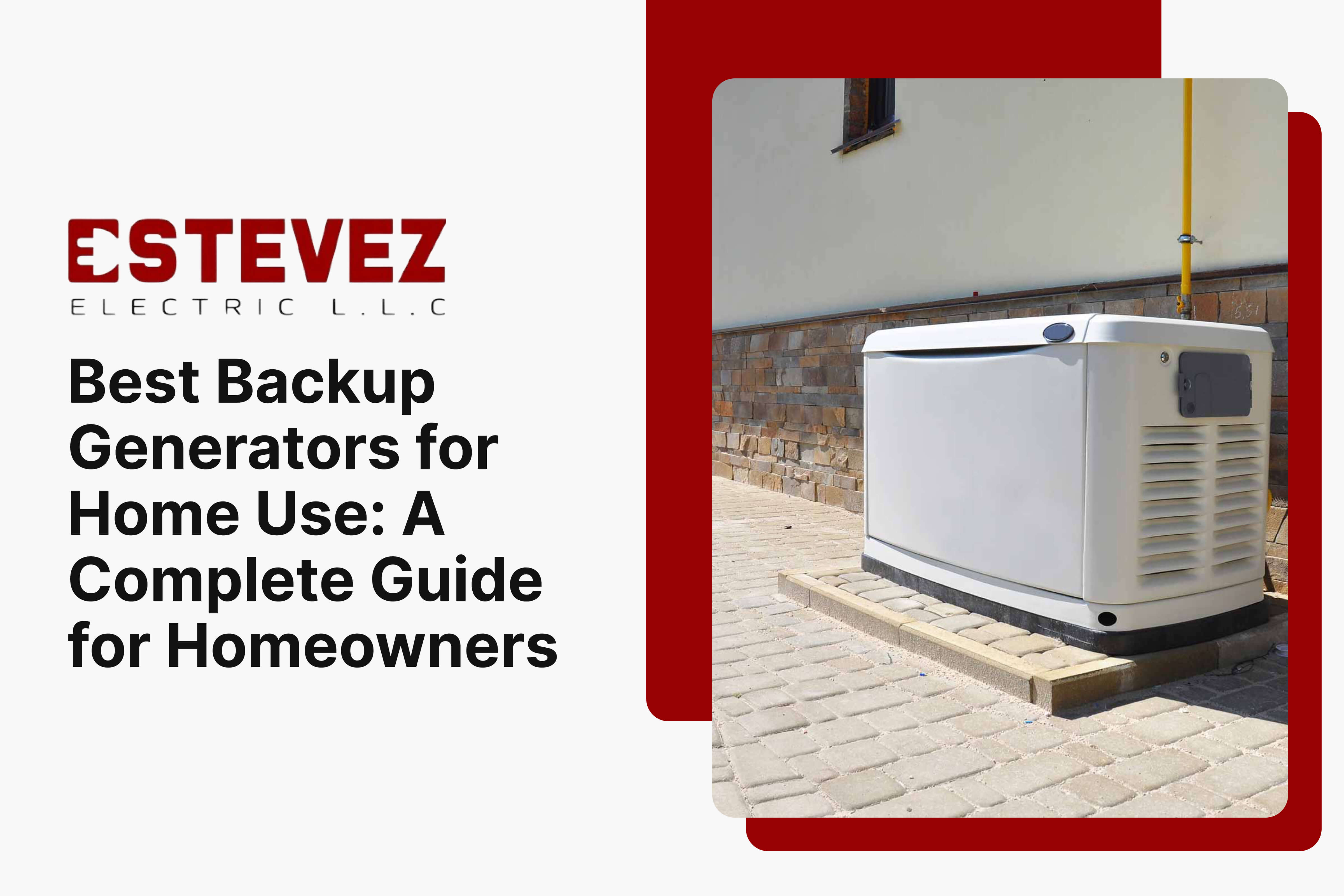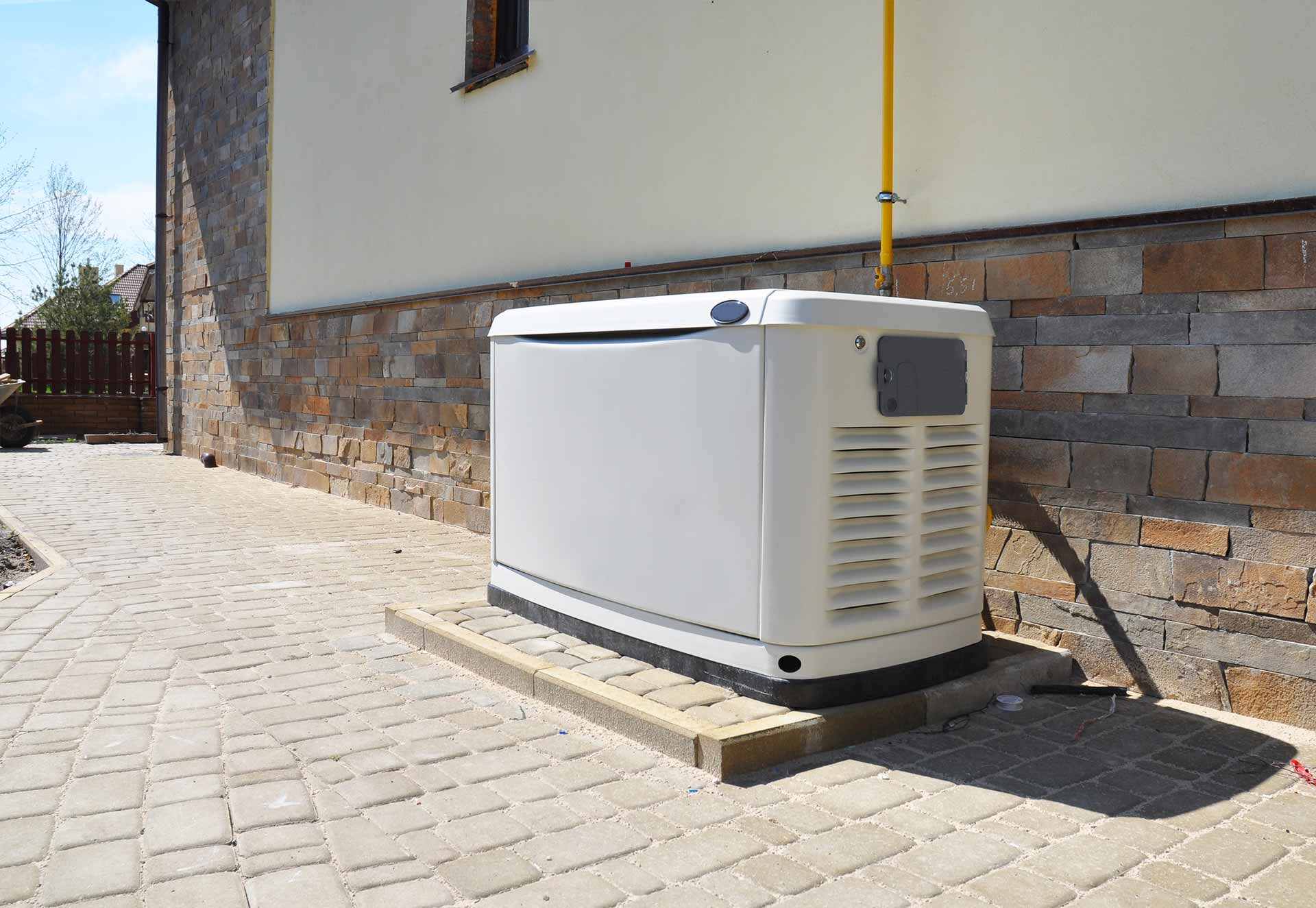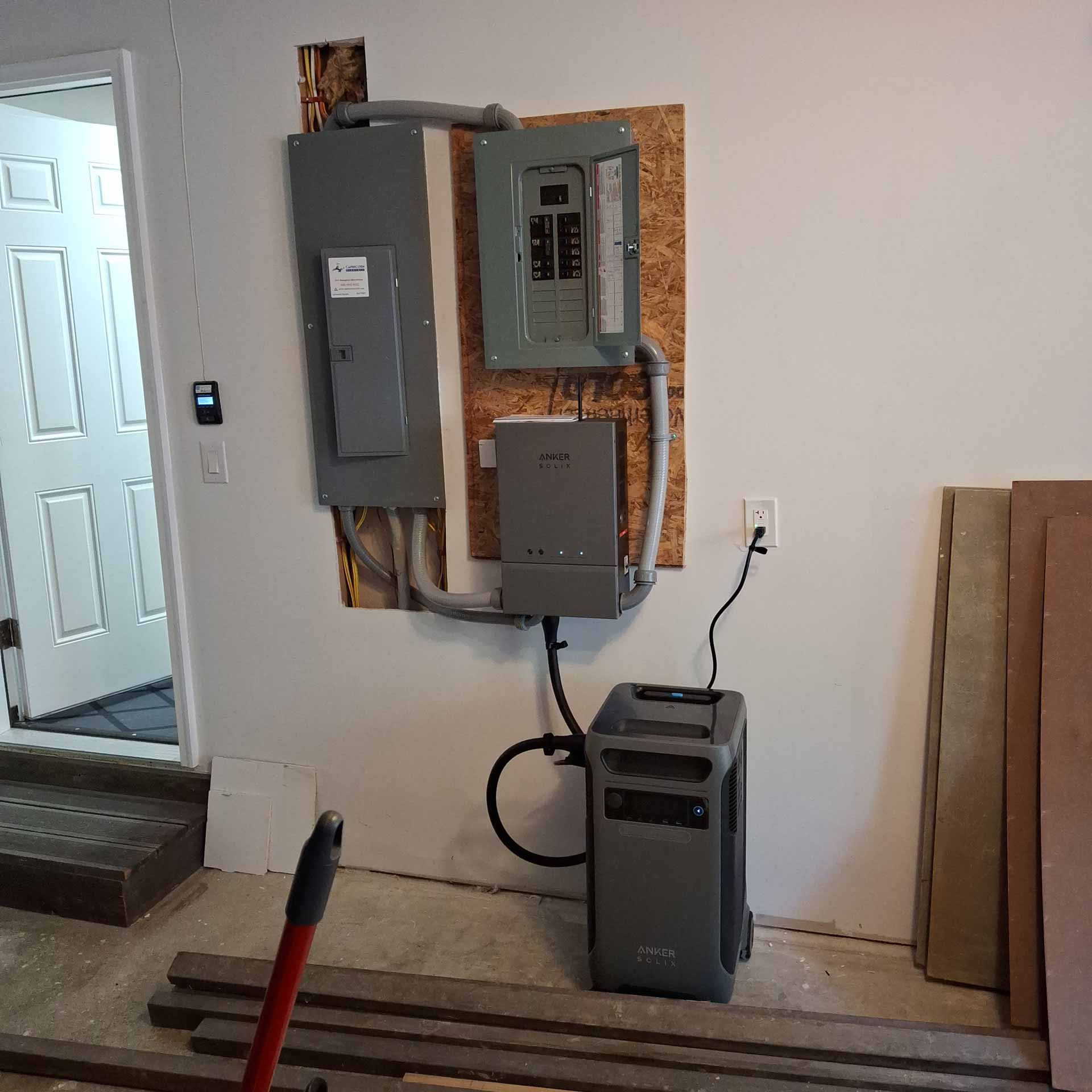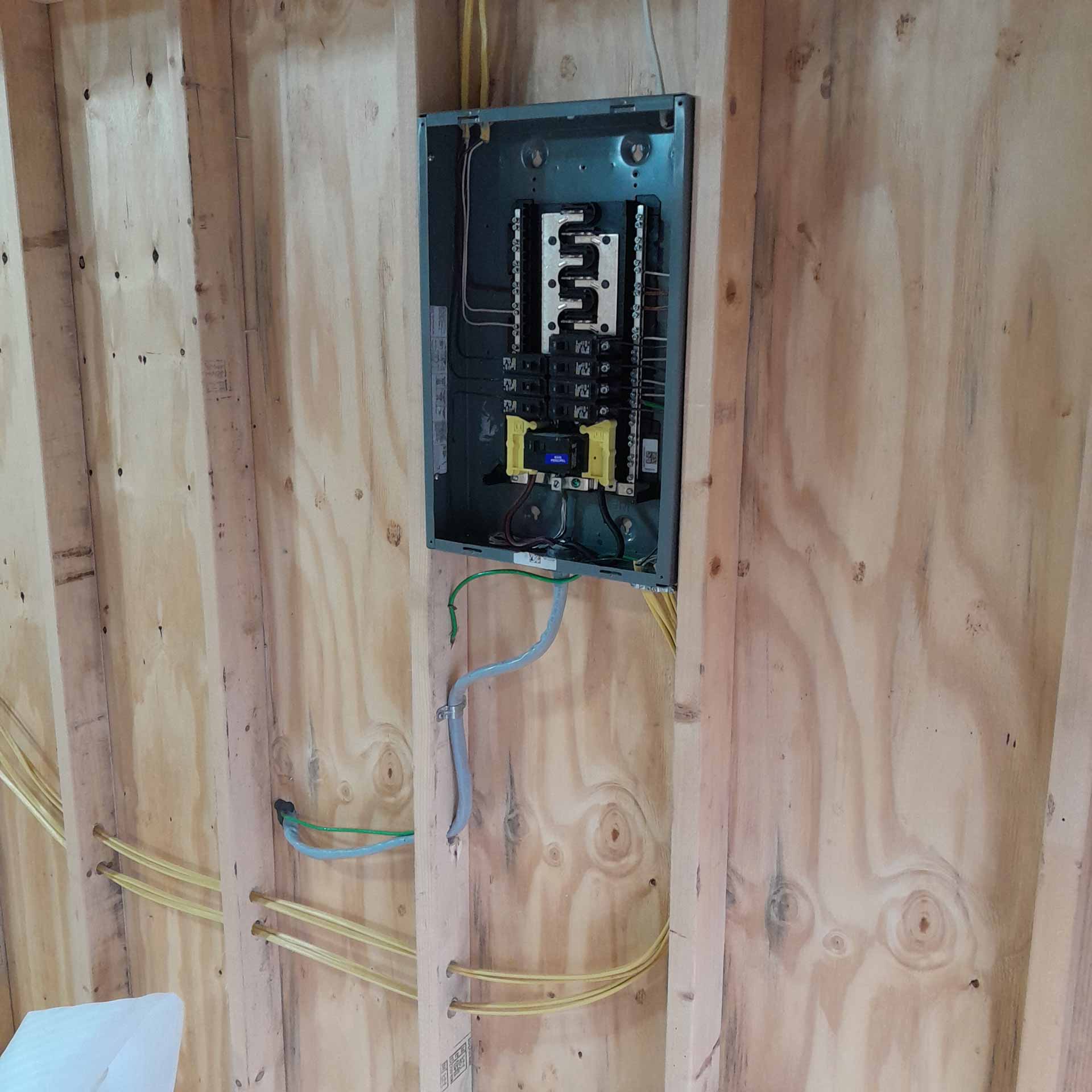Key Takeaways
- Accurately sizing your generator based on specific household electrical loads ensures reliable performance during outages
- Regular maintenance including oil changes, filter replacements, and system testing is essential for generator longevity
- Proper generator placement at least 20 feet from your home with carbon monoxide detectors installed is critical for safety
- Different fuel options (natural gas, propane, gasoline, diesel) offer varying benefits in terms of availability, storage, and runtime
- Professional installation by certified technicians ensures code compliance and proper connection to your home’s electrical system
- Total investment costs include purchase, installation, fuel, and maintenance, with standby systems typically ranging from $5,000-$20,000
- Modern generators offer smart features including remote monitoring, self-diagnostics, and integration with home automation systems
Introduction to Home Backup Power Solutions
Power outages can strike at any time, leaving your home without electricity. When this happens, you might face spoiled food, no heating or cooling, and other problems that can be expensive and uncomfortable. For people who live in areas with bad weather or unreliable power, having a backup generator isn’t just nice to have—it’s necessary.
At Estevez Electric LLC, we know how important it is to keep your home powered during any situation. As electrical contractors in Pottstown, PA and nearby areas, we’ve helped many homeowners pick and install the right backup power systems for their needs.
This guide will tell you everything you need to know about choosing, installing, and taking care of the best backup generator for your home. We’ll cover different types, fuel options, safety practices, and maintenance tips to help you make a good decision for your home’s backup power needs.
Understanding Your Home’s Power Requirements
Before buying a generator, you need to figure out how much power your home needs. This step is really important to make sure you get a generator that can handle your needs without spending too much money. Many people don’t realize how much power they actually need, which can lead to frustration when the generator can’t run important appliances during an outage. A correctly sized generator gives you peace of mind that critical systems will keep working when the power goes out.
To figure out your home’s power needs, start by making a list of all the important appliances and systems you’d want to keep running during a power outage. Remember that some appliances, like refrigerators and air conditioners, need a lot more power to start up than they do to keep running. This “starting wattage” can be two or three times higher than the running wattage, and your generator needs to handle these power surges without shutting down. Understanding these peak demands is really important for picking a generator with enough capacity for your specific needs.
When calculating your power needs, don’t forget to include essential items like:
- Refrigerator and freezer (typically 700-1,200 watts running, 2,100-3,600 watts starting)
- Heating systems including furnace fans (500-1,500 watts)
- Sump pumps to prevent basement flooding (800-1,800 watts)
- Well pumps if you’re on a private water system (1,000-2,000 watts)
- Lighting circuits (400-800 watts depending on number and type)
- Medical equipment for family members with health needs
Our residential electricians can do a detailed load calculation for your home, taking the guesswork out of sizing your generator. This professional assessment makes sure you’ll have a system that meets your needs without unnecessary expense.
Types of Home Backup Generators
When looking at backup power for your home, there are several types of generators to think about. Each has its own good points, limits, and best uses. Understanding these differences will help you pick the option that best fits your specific situation and budget. The right choice depends on factors like your power needs, budget, and how often you have power outages in your area.
Portable generators give you flexibility and cost less upfront, making them popular for occasional use or as a starter backup power solution. You can move these units where needed and store them when not in use. But they require manual setup during outages and usually provide less power than permanent solutions. You’ll also need to refuel them regularly during long outages, which can be hard if fuel is limited. Most portable generators run on gasoline, though some models can use propane or natural gas with the right conversion kits. For homeowners with modest power needs or infrequent outages, portable generators provide an accessible and cost-effective solution.
Inverter generators are a more advanced portable option, offering cleaner power output that’s safe for sensitive electronics. They’re typically quieter and more fuel-efficient than standard portable generators, though they generally provide less total power. For homeowners concerned about noise or who need to power computers and other sensitive devices, inverter generators offer significant advantages. These units adjust engine speed based on the electrical load, resulting in quieter operation, better fuel economy, and reduced emissions compared to conventional portable generators. The stable, clean power they produce is comparable to utility power, making them ideal for charging devices and running electronics.
Our professional generator installation services can help you determine which type of system best meets your needs and budget. We’ll consider factors like your power requirements, fuel availability, noise concerns, and maintenance preferences to recommend the optimal solution.
Fuel Types and Considerations
The fuel source you choose for your generator significantly impacts its convenience, runtime, and maintenance requirements. Each fuel type has distinct advantages and limitations that should be carefully considered based on your specific situation and priorities. Making the right choice here is crucial for long-term satisfaction with your backup power system. Fuel availability, storage requirements, and local regulations all play important roles in determining the most practical option for your home.
Natural gas generators connect directly to your home’s existing gas line, providing a continuous fuel supply without the need for storage or refueling. This makes them incredibly convenient for extended outages. Natural gas burns cleaner than gasoline or diesel, producing fewer emissions and less maintenance issues over time. However, it’s important to note that natural gas service may be interrupted during some disasters, particularly earthquakes, which could leave you without generator power when you need it most. Additionally, if your home doesn’t already have natural gas service, the cost to install a gas line can be substantial. For most homes with existing natural gas service, this fuel type offers the best combination of convenience and reliability.
Propane (LP gas) offers excellent shelf life, as it doesn’t degrade over time like gasoline. It’s available in portable tanks or can be supplied through a permanent tank installation on your property. Propane burns cleaner than gasoline or diesel and performs well in cold weather. For homes without natural gas service, propane often represents the best option for standby generators. The main limitation is that your runtime is determined by your tank size, requiring monitoring and occasional refilling. Many homeowners choose to install larger propane tanks (250-500 gallons) to provide extended runtime during prolonged outages. Propane is also widely available even during widespread power outages, as delivery trucks can continue to operate.
When selecting a fuel type, consider your home’s existing infrastructure, local fuel availability, expected runtime needs, and maintenance preferences. Our generator installation checklist can help you evaluate these factors for your specific situation.
Installation Considerations for Home Generators
Proper installation is crucial for the safety, reliability, and performance of your home backup generator. Unlike many DIY home projects, generator installation involves complex electrical, fuel, and safety considerations that typically require professional expertise. Understanding the key installation factors will help you prepare for this important process and ensure your system meets all necessary requirements. A properly installed generator will provide years of reliable service, while improper installation can lead to safety hazards, operational problems, and potential damage to your home’s electrical system.
The location and placement of your generator must comply with safety codes and manufacturer specifications. Generators need to be installed on a stable, level surface, typically a concrete pad, and positioned with adequate clearance from your home and property lines. Most importantly, generators must be placed far enough from windows, doors, and air intakes to prevent carbon monoxide from entering your home. Local codes typically require at least 18-24 inches of clearance from your home’s structure, but many professionals recommend at least 5 feet for safety and noise reduction. Additional considerations include protection from flooding, accessibility for maintenance, and noise impact on neighbors. Your installation location should also account for fuel line routing, electrical connection accessibility, and any local zoning restrictions that might apply.
A transfer switch is an essential component that safely connects your generator to your home’s electrical system. This device prevents backfeeding, which can endanger utility workers by sending electricity back into the grid. There are two main types of transfer switches: manual switches that require you to physically change the power source, and automatic switches that detect outages and switch to generator power without intervention. While automatic switches are more expensive, they provide seamless transition and are especially valuable for homeowners who travel frequently or have medical equipment that can’t tolerate power interruptions. The transfer switch must be properly sized to match both your generator’s output and your home’s electrical service. For whole-house systems, the transfer switch is typically installed near your main electrical panel, while partial home systems may use specialized transfer switches that connect only to selected circuits.
Our residential electricians have the expertise, tools, and certifications to safely install your backup generator system, giving you peace of mind that your investment is properly set up. We handle all aspects of installation, from site preparation and permitting to final testing and system demonstration.
Safety Features and Considerations
Safety should be your top priority when selecting and operating a backup generator. Modern generators come with various safety features that protect your home and family from potential hazards. Understanding these features and implementing proper safety practices is essential for trouble-free generator operation during power outages. Generator safety encompasses multiple concerns including carbon monoxide exposure, electrical hazards, fire risks, and operational safety during adverse weather conditions.
Carbon monoxide (CO) poisoning is one of the most serious risks associated with generators. This colorless, odorless gas can be deadly, and hundreds of people die each year from generator-related CO poisoning. Newer generators include important safety features to address this risk, including automatic CO shutoff systems that detect dangerous carbon monoxide levels and shut down the generator before harmful concentrations build up. Some models also include low-CO engines specifically designed to produce less carbon monoxide in the first place. These advanced safety features provide crucial protection, but they should be considered supplementary to proper generator placement and ventilation. The Consumer Product Safety Commission reports that improper generator placement is a leading cause of carbon monoxide fatalities during power outages.
Even with these built-in protections, it’s critical to install carbon monoxide detectors in your home and never operate portable generators indoors or in partially enclosed spaces like garages, basements, or porches. Always position generators at least 20 feet from your home with the exhaust directed away from windows and doors. Consider wind direction when placing portable generators to ensure exhaust fumes won’t be blown toward your home. Battery-powered CO detectors with digital displays should be installed on every level of your home and outside sleeping areas, providing an additional layer of protection for your family.
Following proper electrical safety practices is essential when using any backup power system. This includes never attempting to power your home by plugging a generator directly into a wall outlet (known as “backfeeding”), which is both illegal and extremely dangerous. Always use a properly installed transfer switch to connect your generator to your home’s electrical system.
Maintenance Requirements for Reliable Operation
Regular maintenance is crucial to ensure your generator will perform reliably when needed. A generator that sits unused for long periods can develop problems that prevent it from starting or running properly during an outage. Proper care extends the life of your investment and ensures it’s ready to operate during emergencies when you need it most. According to industry data, lack of maintenance is the leading cause of generator failures, with over 60% of emergency service calls resulting from preventable maintenance issues.
For permanent home backup generators, maintenance should follow a regular schedule. Most modern units perform automatic self-tests weekly, running for a few minutes to ensure all systems are functioning properly. Monthly visual inspections are recommended to check oil levels, look for leaks, and listen for unusual noises that might indicate developing problems. Quarterly maintenance should include checking battery connections, cleaning the exterior, and inspecting the air filter for dirt or debris that could restrict airflow. Keeping detailed maintenance records helps track service history and identify potential patterns that might indicate underlying issues requiring attention.
Annual professional service is recommended for all permanent generators. This comprehensive maintenance typically includes changing the oil and oil filter, replacing the air filter, checking and possibly replacing spark plugs, inspecting the battery, testing the transfer switch, and examining all electrical connections. This yearly service ensures your generator remains in optimal condition and can significantly extend its operational life. Most manufacturers require documented annual maintenance to maintain warranty coverage, making this service not just a good practice but often a necessity for protecting your investment. Professional technicians can also update firmware and software in modern generators, ensuring your system has the latest features and security updates.
Our generator maintenance services provide comprehensive care to keep your system in optimal condition. We offer maintenance plans that include regular scheduled service, priority emergency response, and discounts on parts and repairs.
Regular Oil Changes
Every 100 hours of operation or annually, whichever comes first
Battery Testing
Check connections monthly and test capacity quarterly
Air Filter Care
Inspect monthly, clean or replace as needed
Load Testing
Run under typical load quarterly to ensure proper function
Cost Considerations and ROI for Homeowners
Investing in a backup generator represents a significant financial decision for most homeowners. Understanding the full cost picture helps you budget appropriately and evaluate the return on investment. While generators aren’t inexpensive, they provide valuable protection against the disruptions and potential damage caused by power outages. When evaluating costs, it’s important to consider not just the initial purchase but the total ownership expenses over the generator’s expected lifespan, which typically ranges from 10-20 years for quality standby models.
The upfront costs vary significantly based on generator type and capacity. Portable generators typically range from $500 to $2,000 for the unit itself, plus $200 to $500 if you choose to install a manual transfer switch for safer connection to your home. Home backup generators are more substantial investments, with the generator unit costing between $3,000 and $15,000 depending on capacity and features. Professional installation adds another $2,000 to $5,000 to the total cost. Whole-home systems for larger properties can range from $10,000 to $25,000 including installation. These price ranges reflect significant variations based on generator capacity, brand, features, and local installation costs. Higher-end models often include extended warranties, premium enclosures, and advanced monitoring capabilities that add value beyond basic functionality.
Contact our team for detailed quotes and financing information for your specific generator needs. We can help you understand all costs involved and identify the most cost-effective solution for your home.
Smart Features and Modern Generator Technology
Today’s backup generators offer advanced features that enhance convenience, efficiency, and reliability. These modern technologies make generator ownership easier and more beneficial than ever before. If you’re in the market for a new generator, understanding these smart features can help you select a system that provides the best experience and value for your investment. The rapid advancement of generator technology has transformed these systems from simple mechanical devices to sophisticated power management solutions with extensive monitoring and control capabilities.
Remote monitoring and control capabilities have transformed how homeowners interact with their generators. Many current models include mobile apps that allow you to monitor your generator’s status, receive alerts, and even control certain functions from anywhere with an internet connection. This means you can check on your generator while traveling or receive immediate notification if there’s an issue requiring attention. Some systems provide detailed performance data, including runtime hours, fuel levels, and maintenance needs, helping you stay on top of your generator’s condition without physical inspection. These remote capabilities are particularly valuable for second homes, rental properties, or for homeowners who travel frequently and want to ensure their backup power system remains operational during their absence.
Our electrical contractors can help you select and install a generator with the smart features that best match your home and lifestyle needs. We stay current with the latest generator technologies to provide our customers with the most advanced and reliable options available.
Making the Right Choice: Selection Guide for Homeowners
With so many options available, selecting the right backup generator can feel overwhelming. This practical guide will help you navigate the decision-making process to find the generator that best meets your specific needs, preferences, and budget. Taking the time to make an informed choice now will lead to years of satisfaction with your backup power solution. The ideal generator for your home depends on a unique combination of factors including your power requirements, property characteristics, budget constraints, and personal preferences.
Start by clearly assessing your specific needs and circumstances. Consider how frequently and how long you typically lose power in your area. A home in a region with rare, brief outages has different requirements than one in an area prone to extended power losses from severe weather. Make a list dividing your power needs into essential items (refrigeration, heating, medical equipment) versus comfort items (entertainment, additional lighting). Establish a realistic budget that includes not just the generator and installation, but also maintenance and fuel costs. Evaluate your available space for generator placement, considering noise concerns and local regulations. Finally, determine what fuel sources are readily available at your location, as this will influence your generator options. This comprehensive assessment forms the foundation for making an informed generator selection that will serve your needs for years to come.
Use this checklist to guide your final decision:
- Have you accurately calculated your power requirements?
- Does the generator type (portable vs. permanent) match your situation?
- Is your preferred fuel source practical and cost-effective for your location?
- Do you have an appropriate installation location that meets all requirements?
- Does the total cost align with your established budget?
- Have you selected a qualified professional for installation?
- Is there a clear plan for ongoing maintenance?
- Will this solution accommodate potential future requirements?
Conclusion: Ensuring Peace of Mind with the Right Backup Power Solution
Investing in a quality backup generator is one of the most practical steps homeowners can take to protect their families and properties from the disruption of power outages. From preserving food and maintaining comfortable temperatures to keeping critical medical equipment running, the right generator provides invaluable peace of mind. As power outages become more frequent and extended due to aging infrastructure and increasingly severe weather events, having reliable backup power is no longer a luxury but a necessity for many households. The U.S. Department of Energy reports that power outages are lasting longer with each passing year, making backup power systems an increasingly important component of home resilience planning.
At Estevez Electric LLC, we understand that each home has unique power needs and challenges. Our experienced team is committed to helping you navigate the selection process, ensuring professional installation, and providing ongoing maintenance to keep your backup power system reliable for years to come. We take pride in delivering solutions that perfectly match our customers’ requirements, preferences, and budgets. Our comprehensive approach includes detailed power needs assessment, customized system recommendations, professional installation that meets all code requirements, and ongoing maintenance programs to ensure your generator remains in optimal condition throughout its lifespan.
Contact us today to schedule a consultation and take the first step toward reliable backup power for your home. Our team is ready to help you assess your needs, explore your options, and implement the perfect solution for your specific situation. Don’t wait until the next power outage leaves you in the dark—prepare now and enjoy the security that comes with knowing you’re ready for whatever comes your way.





